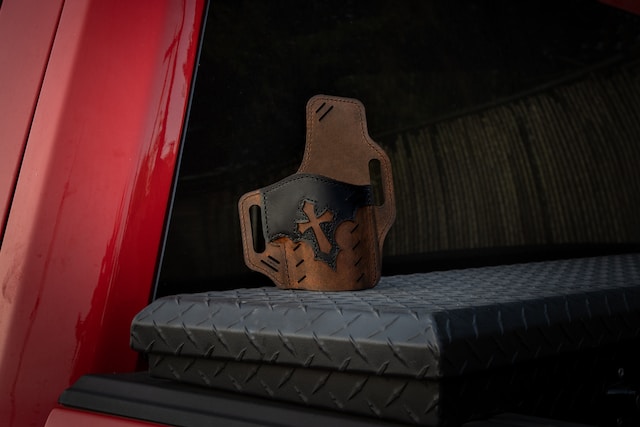Holster retention is a critical aspect of firearm safety and self-defense. In this guide, we will explore the importance of holster retention, the types of retention systems available, and how to maintain proper holster retention.

The Importance of Holster Retention
Holster retention refers to the ability of a holster to keep the firearm securely in place, even during physical activity or a struggle. Proper holster retention is crucial for firearm safety and self-defense.
If a gun falls out of a holster, it can accidentally discharge or become accessible to an unauthorized person. In self-defense situations, holster retention is even more critical. If an attacker can take your firearm, they can use it against you or others. Holster retention allows the user to retain control of their firearm, even in a physical struggle.
Types of Holster Retention Systems
Passive Retention
Passive retention is the most basic type of retention system. It relies on the holster’s shape and tension to keep the firearm in place. It typically has adjustable screws or tensioners that allow users to adjust the retention level.
Moreover, passive retention systems are easy to use and maintain but may not be suitable for high-intensity activities or self-defense situations.
Active Retention
Active retention systems incorporate supplementary mechanisms to offer an additional level of security, which necessitates manual disengagement before drawing the firearm from the holster. While they provide higher security than passive retention systems, they can be more complex to operate and require greater proficiency through training.
Level Retention
Retention systems at the highest level utilize various locking mechanisms, such as thumb or finger releases or other locking devices, to ensure the utmost security. While they offer the highest level of security, they can be challenging to handle and necessitate extensive training to become proficient in their use.
Maintaining Proper Holster Retention
Proper holster retention requires regular maintenance and inspection. Here are some tips for maintaining adequate holster retention:
1. Clean Your Holster Regularly
Regular cleaning of your holster is essential to maintain proper retention. Dirt and debris can accumulate, causing the retention properties to deteriorate.
To clean, use a soft cloth and mild soap to remove dirt or debris. Doing so can ensure that your holster retention system is functioning correctly.
2. Check Your Retention Screws or Tensioners
If your holster has adjustable retention screws or tensioners, check them regularly to ensure they are correctly adjusted. If they are too loose, your firearm may fall out of the holster. If they are tight enough, you may need to draw your gun more quickly in self-defense.
3. Inspect Your Holster for Wear and Tear
Inspecting your holster for wear and tear is crucial to maintain proper retention. Over time, the holster may become damaged, causing it to lose its retention properties.
Regularly check for signs of wear, such as frayed edges or loose stitching. If you notice any damage, replace your holster immediately to ensure your safety.
4. Practice Drawing Your Firearm
Regular practice is essential for maintaining proper holster retention. Practice drawing your firearm from your holster regularly, paying close attention to the retention system. This will help you develop muscle memory and safely remove your gun in self-defense.
Conclusion
Effective holster retention is a vital element of firearm safety and self-defense, enabling users to maintain control of their firearm even during physical altercations. By following these tips, you can ensure that your holster retention system functions correctly and that you are prepared for self-defense.
Explore the best collection of everyday carry essentials at EDC HUB, including a wide range of high-quality pocket knives, tactical flashlights, and gun holsters. Discover the ultimate gear to keep you prepared for any situation. Get yours today!
